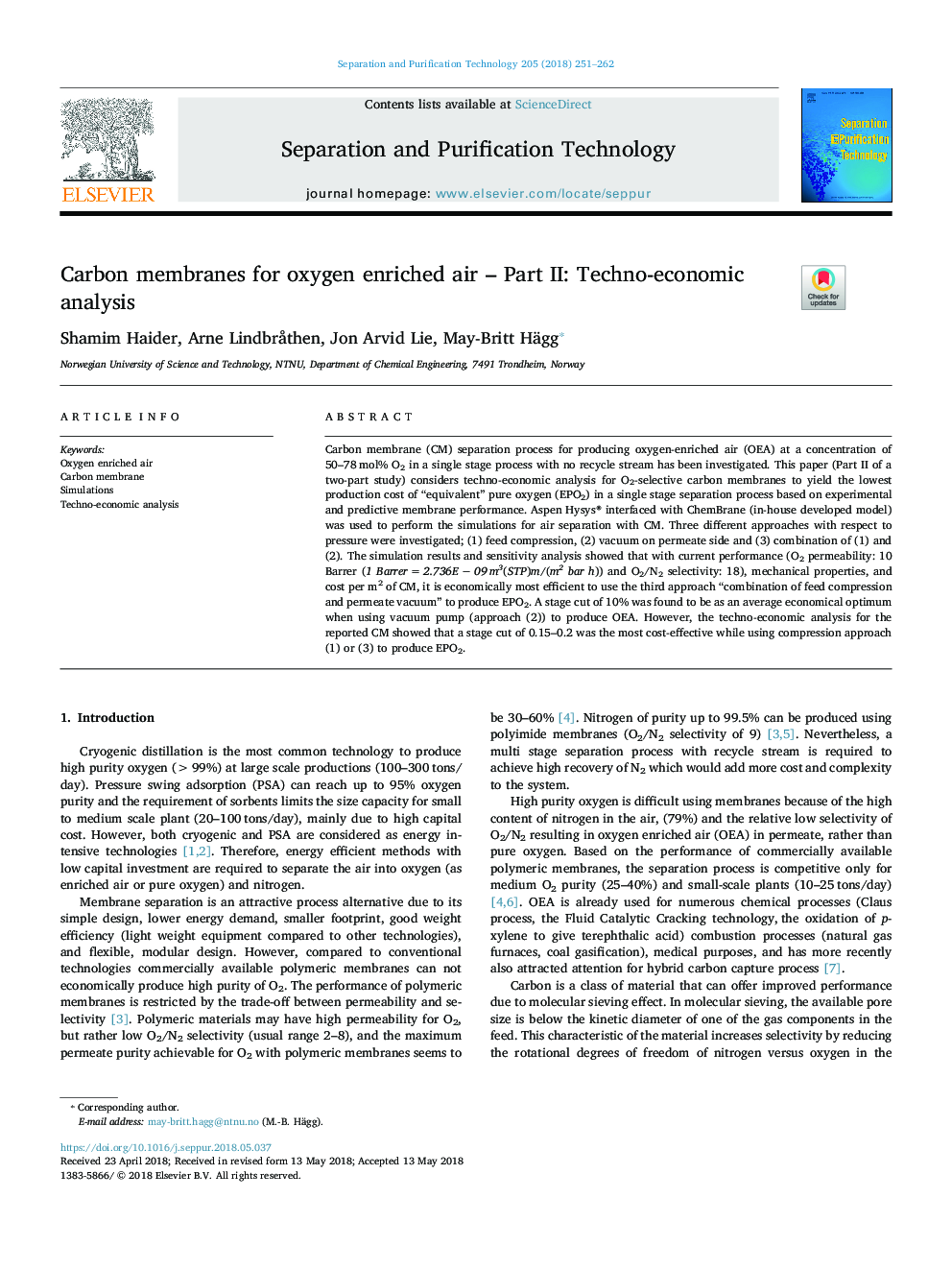| Article ID | Journal | Published Year | Pages | File Type |
|---|---|---|---|---|
| 7043631 | Separation and Purification Technology | 2018 | 12 Pages |
Abstract
Carbon membrane (CM) separation process for producing oxygen-enriched air (OEA) at a concentration of 50-78â¯mol% O2 in a single stage process with no recycle stream has been investigated. This paper (Part II of a two-part study) considers techno-economic analysis for O2-selective carbon membranes to yield the lowest production cost of “equivalent” pure oxygen (EPO2) in a single stage separation process based on experimental and predictive membrane performance. Aspen Hysys® interfaced with ChemBrane (in-house developed model) was used to perform the simulations for air separation with CM. Three different approaches with respect to pressure were investigated; (1) feed compression, (2) vacuum on permeate side and (3) combination of (1) and (2). The simulation results and sensitivity analysis showed that with current performance (O2 permeability: 10 Barrer (1 Barrerâ¯=â¯2.736Eâ¯ââ¯09â¯m3(STP)m/(m2 bar h)) and O2/N2 selectivity: 18), mechanical properties, and cost per m2 of CM, it is economically most efficient to use the third approach “combination of feed compression and permeate vacuum” to produce EPO2. A stage cut of 10% was found to be as an average economical optimum when using vacuum pump (approach (2)) to produce OEA. However, the techno-economic analysis for the reported CM showed that a stage cut of 0.15-0.2 was the most cost-effective while using compression approach (1) or (3) to produce EPO2.
Related Topics
Physical Sciences and Engineering
Chemical Engineering
Filtration and Separation
Authors
Shamim Haider, Arne LindbrÃ¥then, Jon Arvid Lie, May-Britt Hägg,
